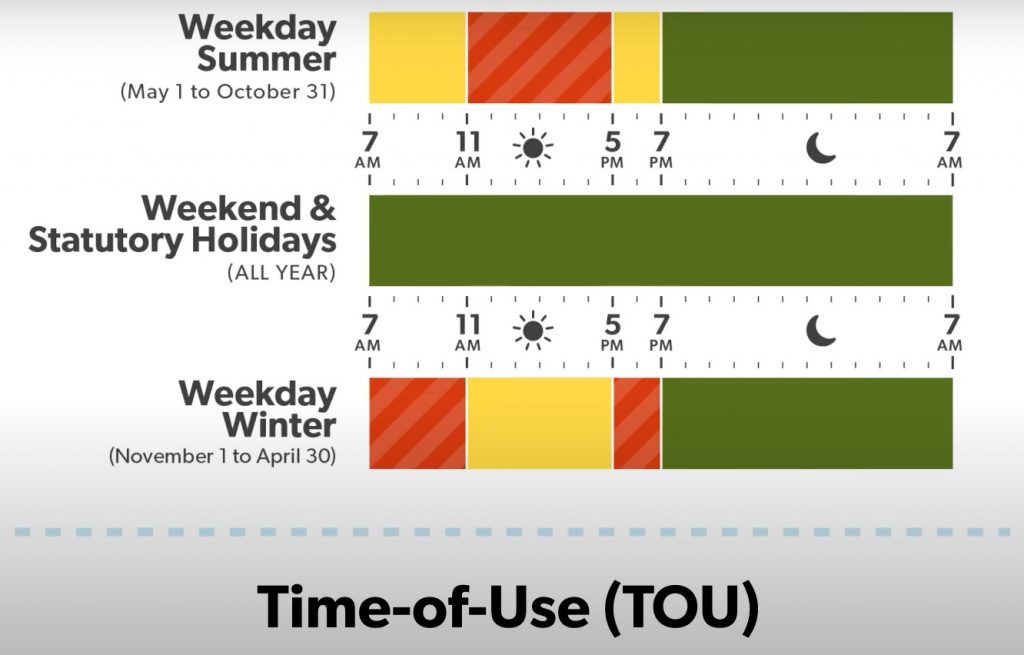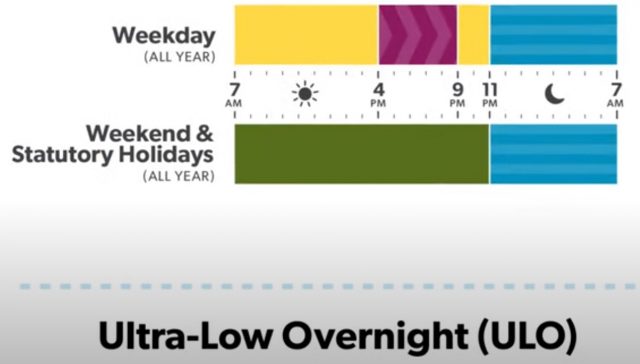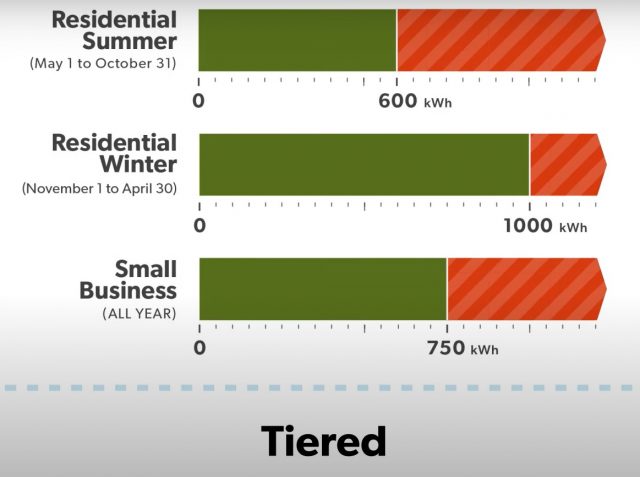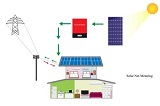The demand for electricity fluctuates throughout the day. In response, the Ontario Energy Board has implemented three pricing structures to help their residential and small business customers conserve energy and reduce their consumption. Understanding the available options can help you make more informed decisions about your energy usage, maintain a reliable power supply for everyone and potentially save on your utility bills.
- Time-of-Use Pricing
TOU electricity pricing is a system where the cost varies based on when you use energy. There are three different time periods – on-peak, mid-peak and off-peak.
- On-peak hours generally occur during weekdays when the demand for electricity is highest.
- Mid-peak hours are during moderate-demand periods.
- Off-peak hours are typically overnight and on weekends when electricity demand is low.
TOU pricing encourages consumers to shift their electricity usage to off-peak hours to reduce strain on the grid.
- Ultra-Low Overnight Pricing
ULO pricing is a variant of TOU pricing specific to Ontario. It offers an even lower electricity rate during designated overnight hours (from 11 p.m. until 7 a.m. every day). This pricing structure incentivizes consumers to save their most energy-intensive tasks, such as laundry or charging electric vehicles, until overnight. It can reduce overall energy consumption and promote higher efficiency.
- Tiered Pricing
Tiered pricing is an alternative to TOU pricing based on how much electricity you use per month. With tiered pricing, you pay a fixed rate for a specific amount of energy consumption. A higher price applies if you exceed that limit.
Tiered pricing allows consumers to have a consistent rate for a portion of their usage, regardless of the time of day. The threshold changes with the season to reflect changing usage patterns.
Between Nov. 1 and April 30, the threshold for residential customers is 1,000 kWh. Between May 1 and Oct. 31), the threshold for residential customers is 600 kWh. The threshold for small business customers is 750 kWh all year round.
Will Switching Plans Save You Money?
There is no guarantee you will save money by changing to a different price plan. Before contacting your provider to switch plans, compare several months of utility bills from different times of year to get an accurate idea of how much electricity you use, on average, per month and when your household or business uses the most energy during the day. You can also compare TOU, ULO and tiered prices with this online bill calculator.
Other ways to save money on your energy bills include using high-efficiency light bulbs, turning off lights and appliances you aren’t using and installing solar panels. These savings can add up over time and provide financial benefits for home and business owners.
Investing in solar panels can lead to significant long-term cost savings. By harnessing the sun’s power, solar panels generate clean and renewable energy that can offset or even eliminate the need for traditional grid electricity. Additionally, you can take advantage of tax incentives and rebates to offset the costs of switching to solar. As energy prices continue rising, you can enjoy stable and predictable utility bills, safeguarding against future price hikes.
Source: Ontario Energy Board
Conserving electricity is an act of personal responsibility that lets you contribute to the collective effort of reducing energy waste and protecting the environment. By being mindful of your electricity usage, you can save money, contribute to a healthier environment for future generations, lead a healthier lifestyle and inspire others to do the same.













